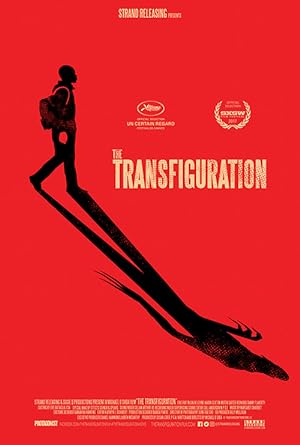Just say the word vampire, and I will watch your movie, but The Transfiguration is not a vampire movie though it has horror elements. Imagine if The Wire had a random subplot about one of the bullied teens, but instead of set in Baltimore, it is set in New York and instead of turning into a drug addict, the child decided to become a vampire. He is actually a serial killer based on a mixture of trauma, disability and environment. The film implicitly asks the audience why we are attracted to the genre as his perseverating about vampires in the media and realism mirrors our own.
His routine of school, sanction imposed therapy and hunting in Manhattan is disrupted when a newcomer, a white teenage girl, arrives and befriends Milo after a random act of kindness. The Transfiguration reminded me of Moonlight because everyone ridicules him for being different, and the unspoken difference seems to be a question of his sexuality. The opening scene initially appears as if he is a sex worker so he attracts no attention when he is killing someone. She makes him seem normal to others, including his family, and some breathe a sigh of relief that he has finally grown out of his awkward stage, but as she gets closer to him, she discovers that his strangeness is not just a harmless phase.
He makes a decision, and the motivation seems ambiguous to me. Is it curiosity, revenge-two birds, one stone or a conscious act of self-destruction from the inception? There is certainly no pretense that it is about need or survival. I did wonder if the visiting customer was one of the earlier visitors who solicited his friend or was just an accessible substitute. This scene and the relationship of people to their harsh environment reminded me of Fish Tank.
Ultimately I did not enjoy The Transfiguration, and not out of anger that they tricked me into watching a film that actually has no vampires. There are people who are real life vampires like Milo and some stop short of killing. Those people are usually white. The media and world are already terrified of black teenage boys when they are walking and holding Skittles so adding that the random black boy near you may be a psychologically disturbed teen trying to suck your blood probably does not help matters. We don’t need more media images as to why people should be afraid of black boys in majority white spaces.
Considering that the turning point in the film does not involve him actually killing someone, but still shows an extraordinary level of casual calculating coldness and cruelty, we did not actually need the vampire element. A series of moments like that would have been more plausible and powerful as unspoken commentary on ghetto tourism before it was a thing and made the Sophie storyline seem less Bluebeard, and more redemptive, which seems to be the ultimate goal of the film. A cautionary tale of the dangers of entering a space for exploitation lest you get exploited is way more provocative and shocking.
There are two possible answers as to what is The Transfiguration. Is it his transformation from being a normal kid to a damaged one who believes that he is a vampire? Or is it his ability to connect to another human being in a healthy and benevolent way? In the end, Milo gets to be a magical Negro and save Sophie. It could be both, but it is probably the latter.
While The Transfiguration is a strong, ambitious first feature film, ultimately using the vampire premise probably detracted from its narrative goals though it is an effective way to attract audiences. I found the movie disappointing at best and a harmful addition into the pantheon of images of fear of black bodies.
Stay In The Know
Join my mailing list to get updates about recent reviews, upcoming speaking engagements, and film news.





